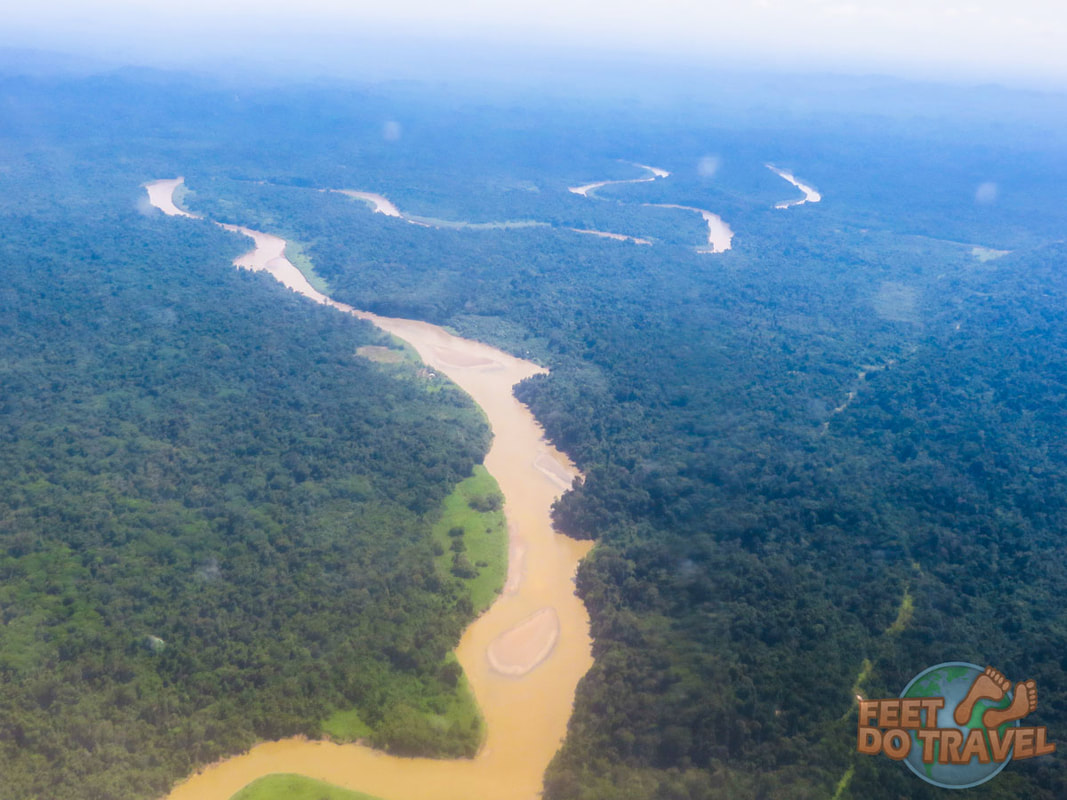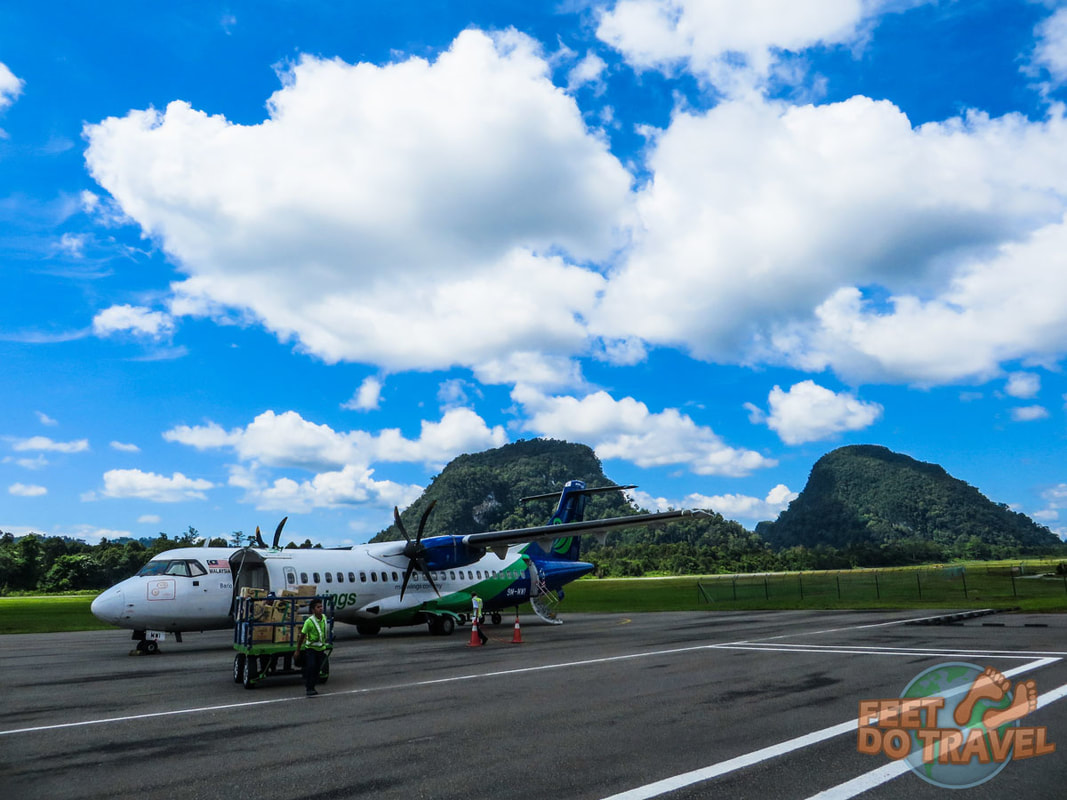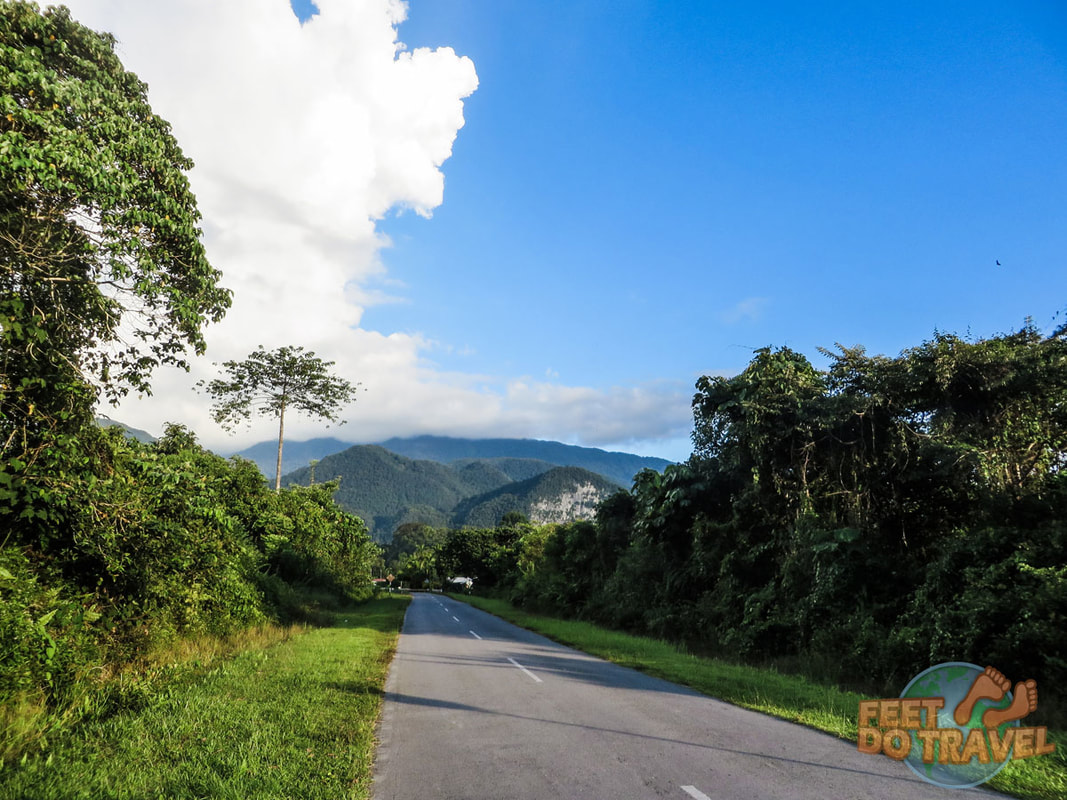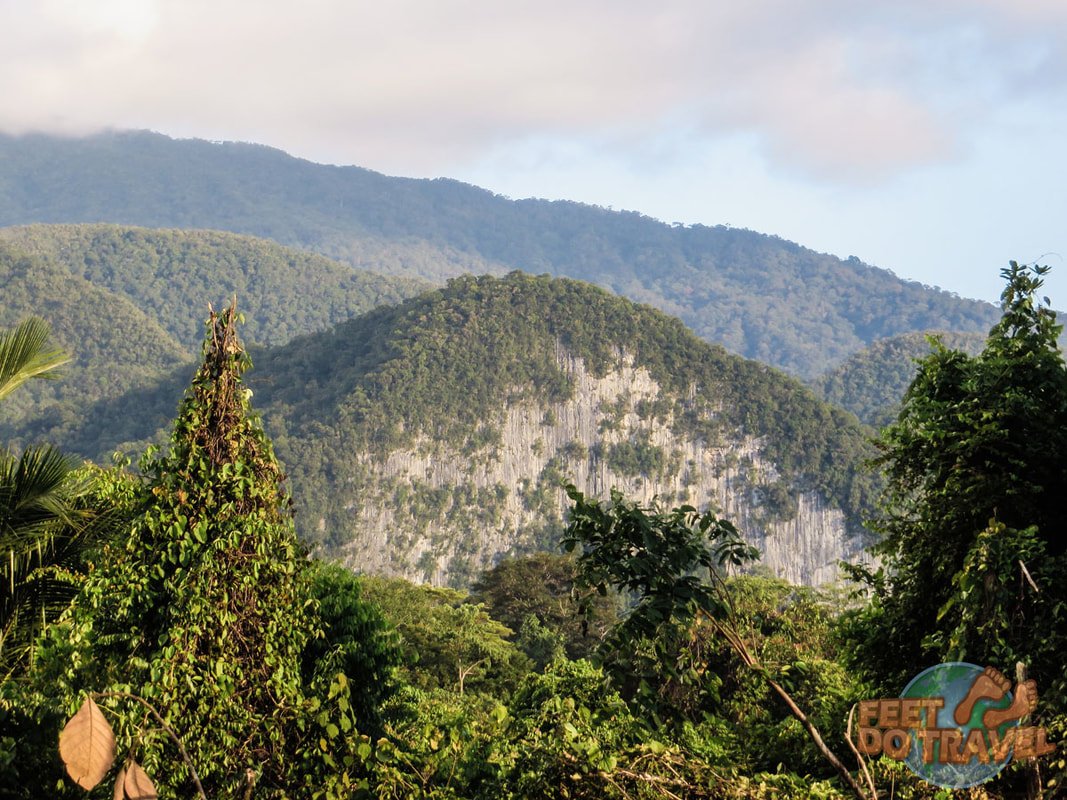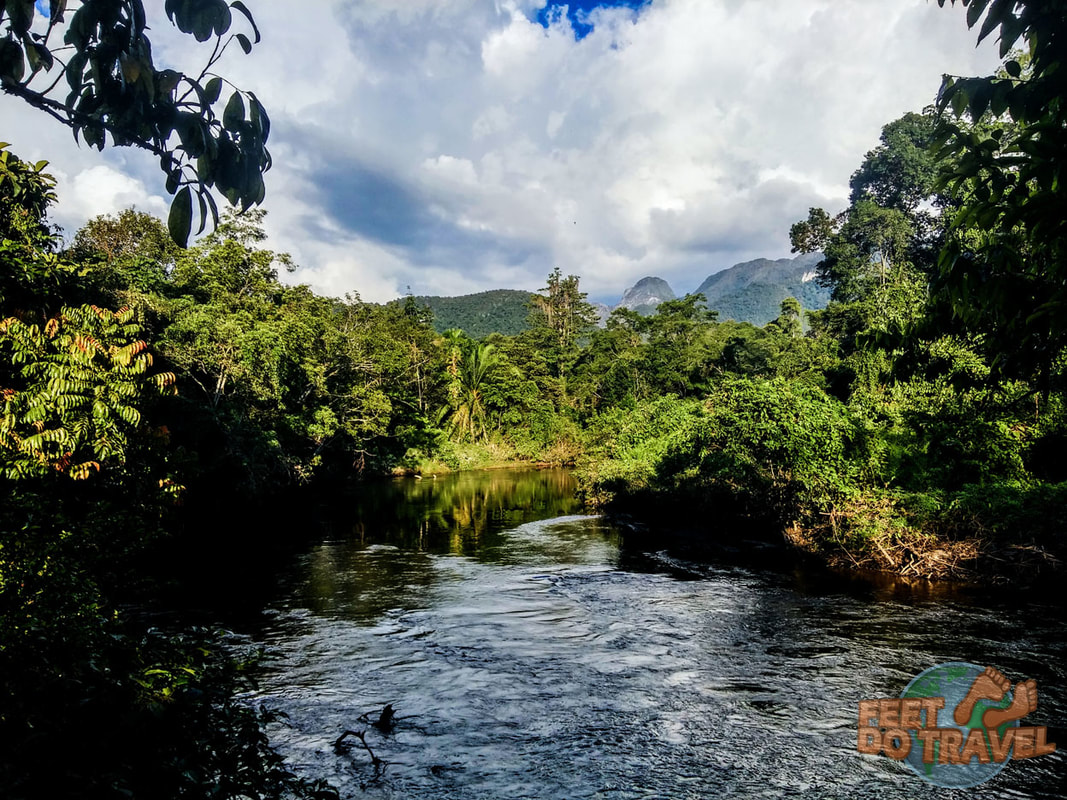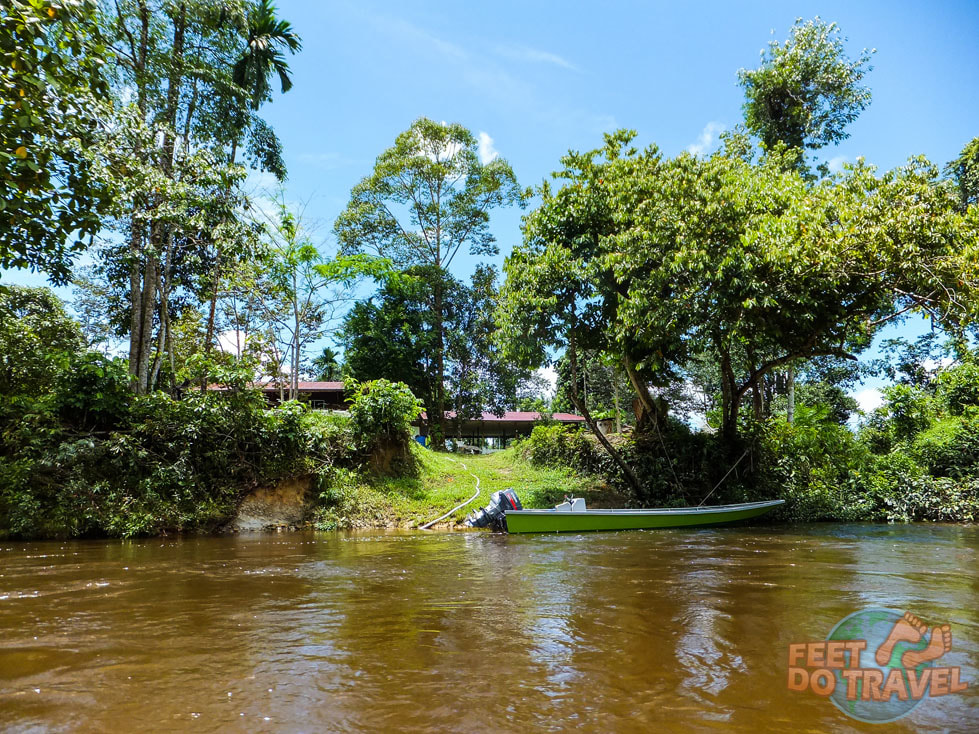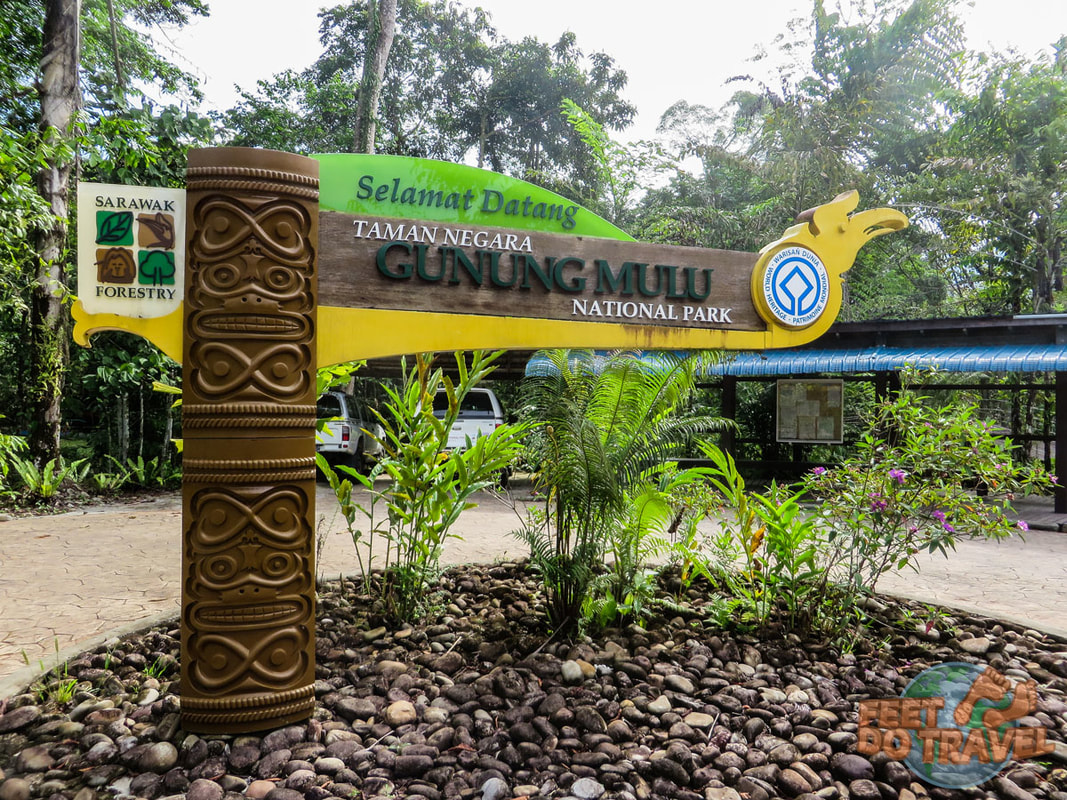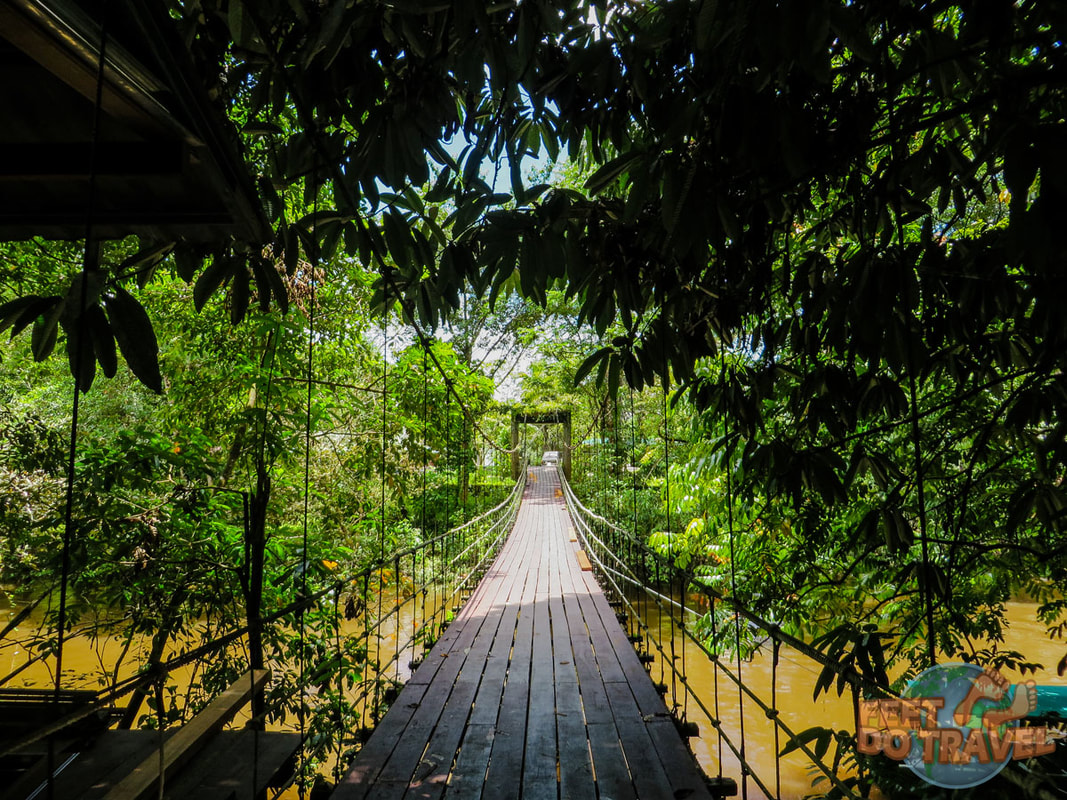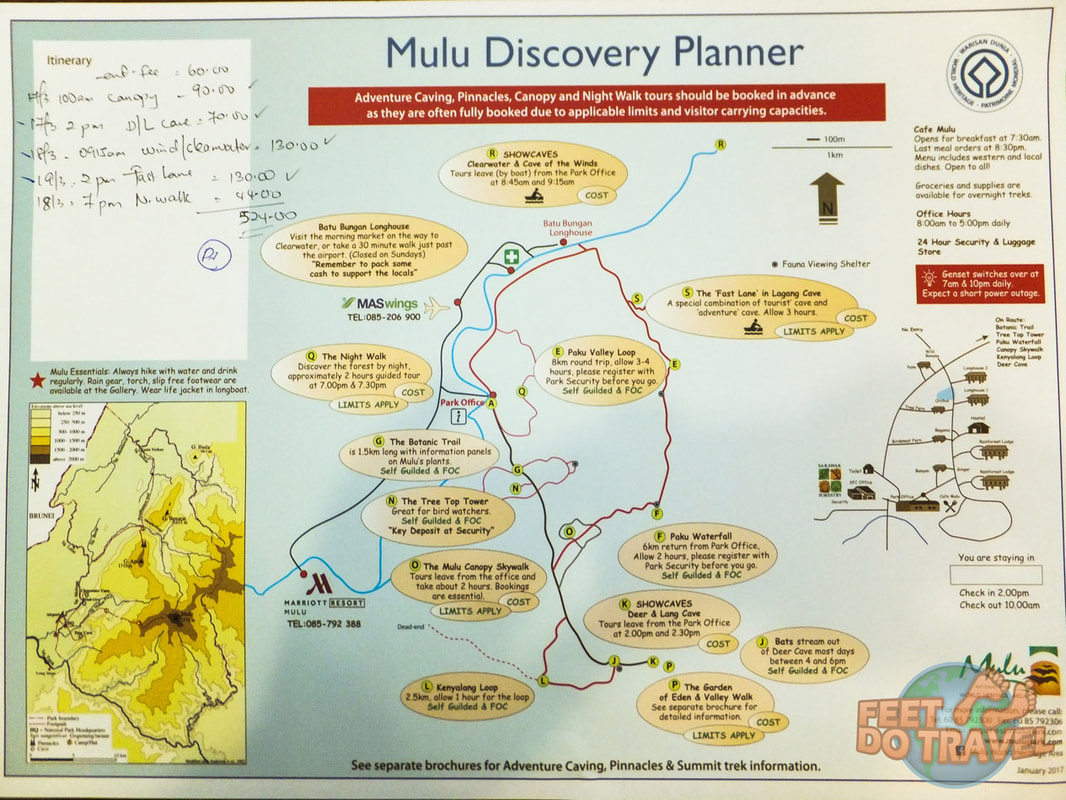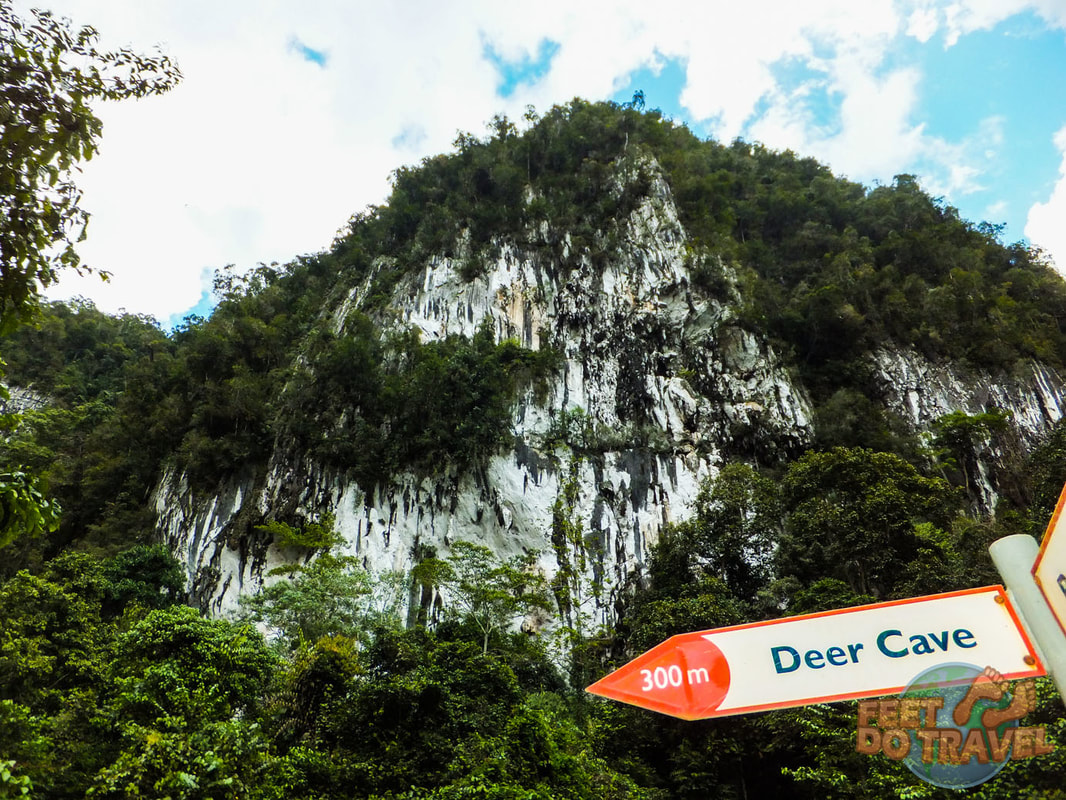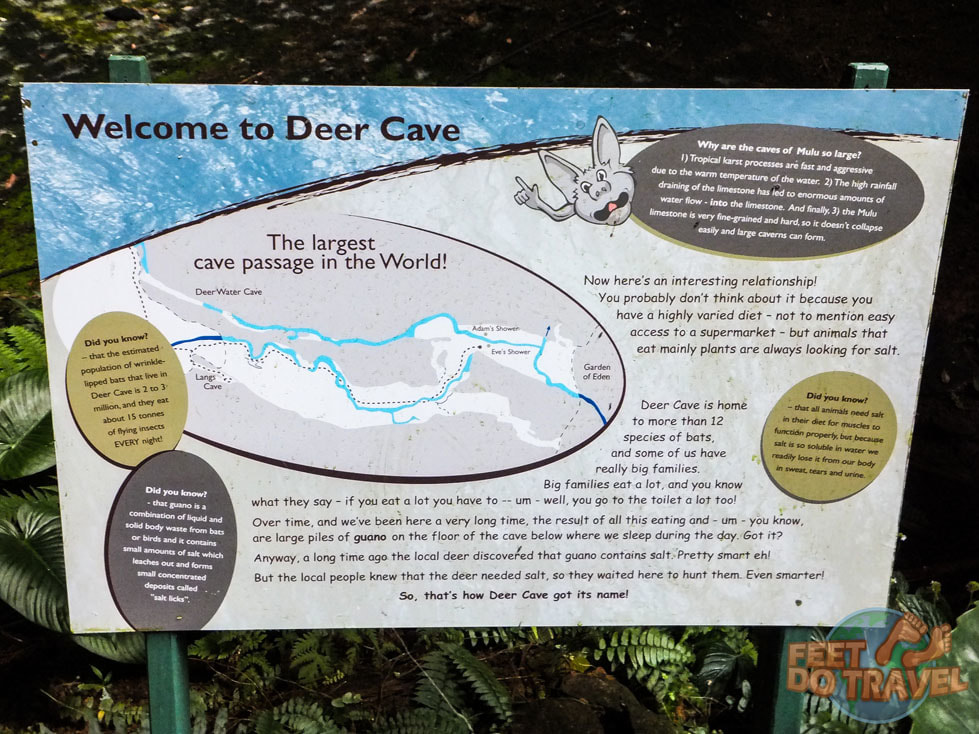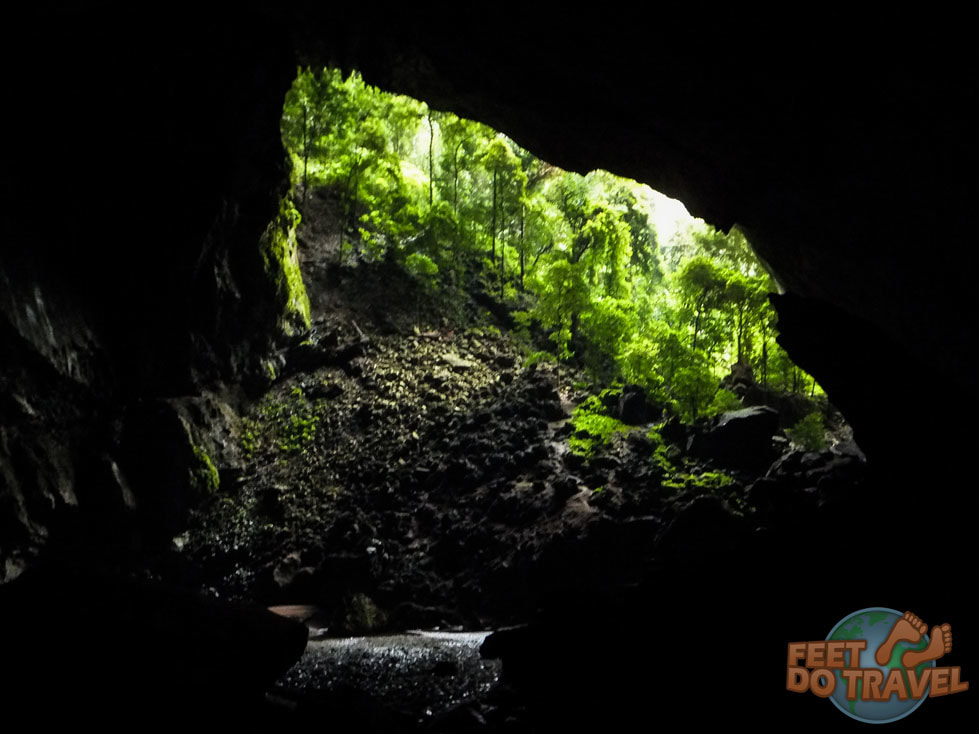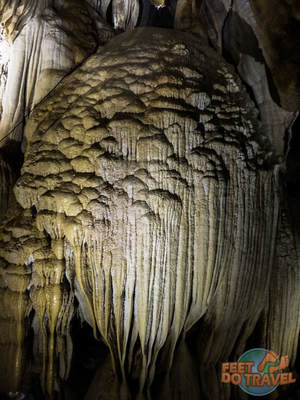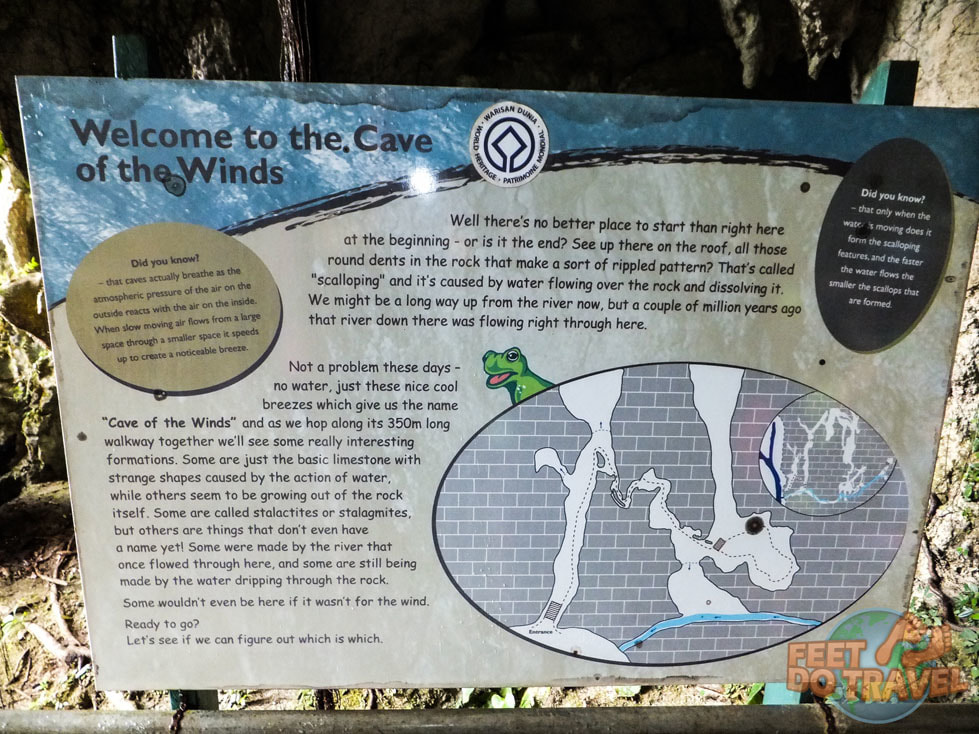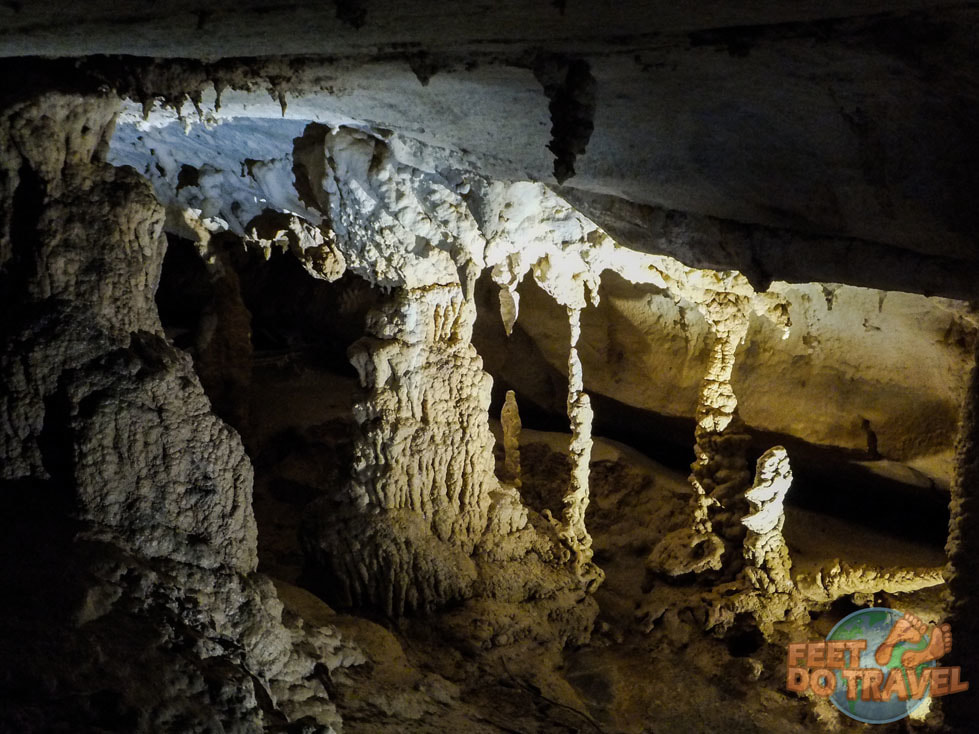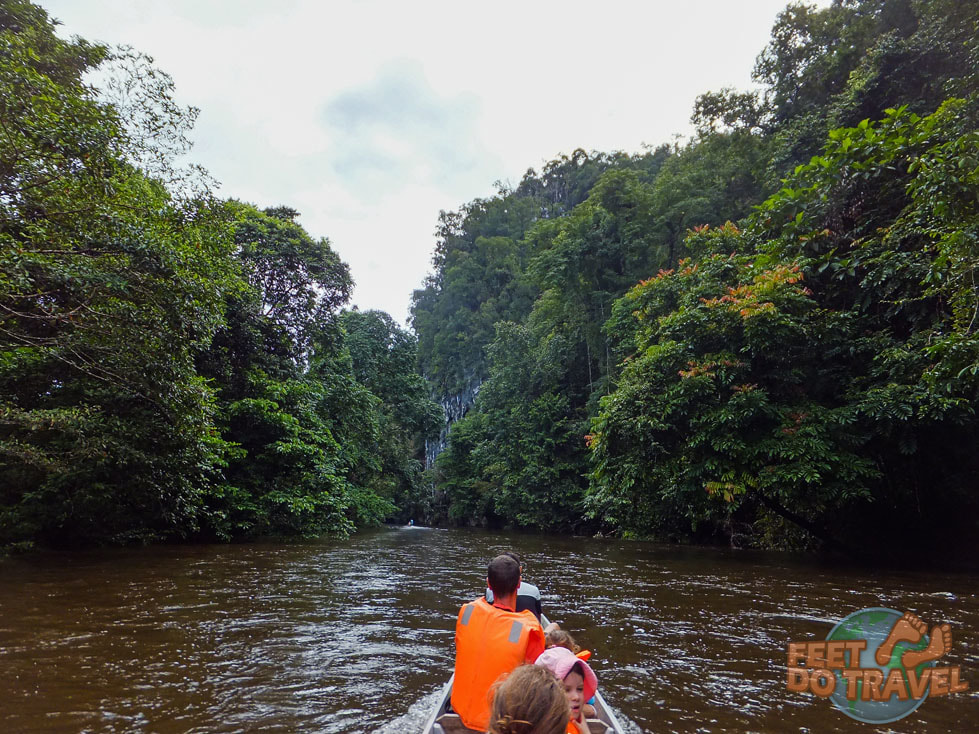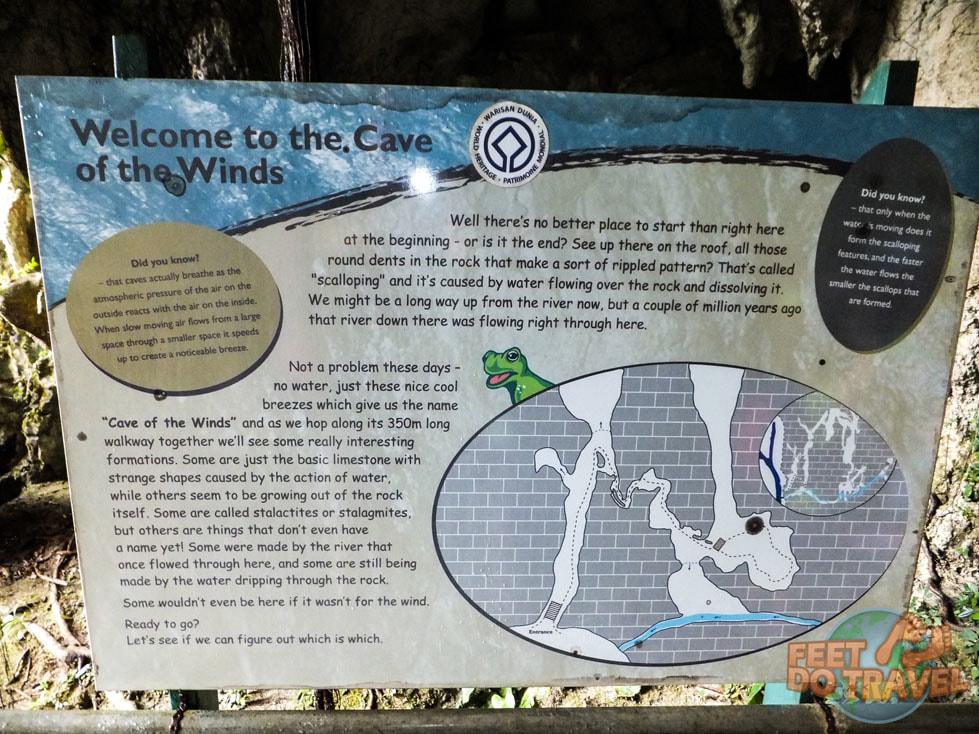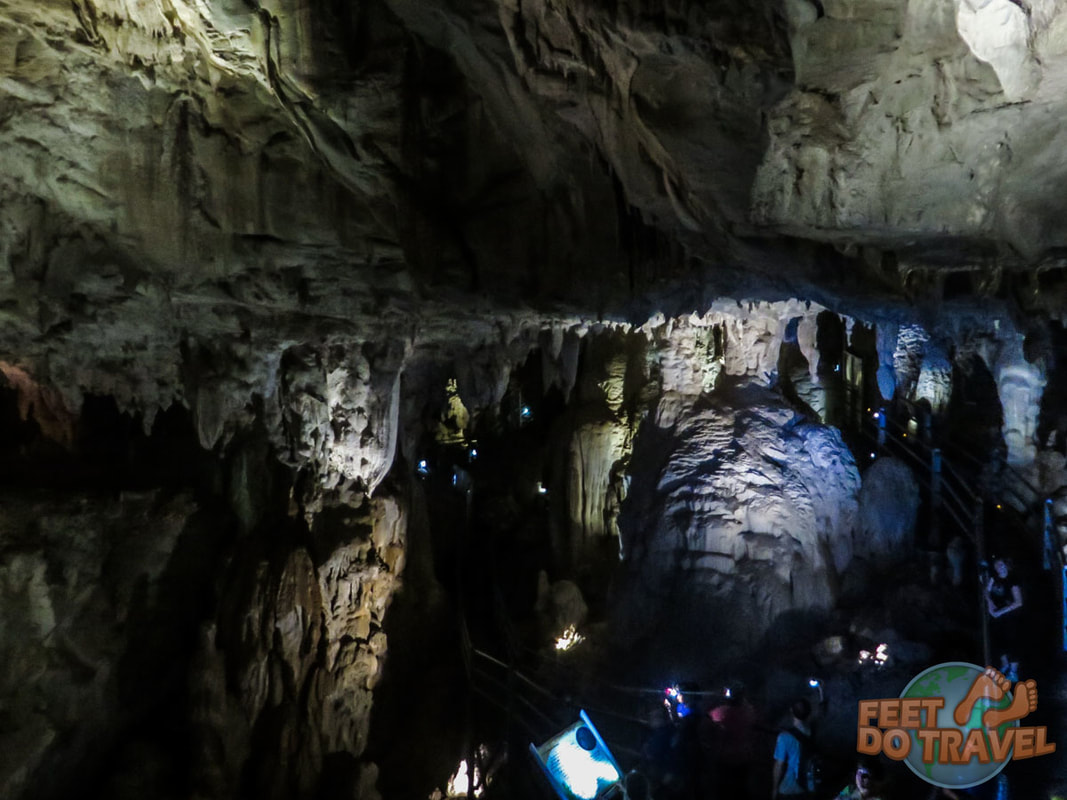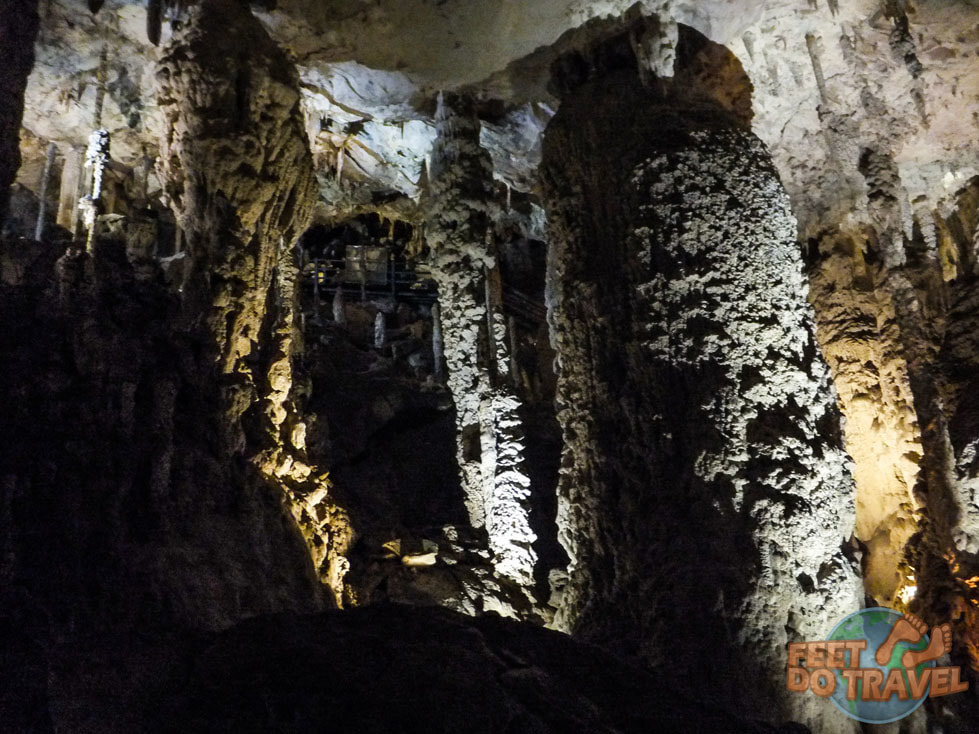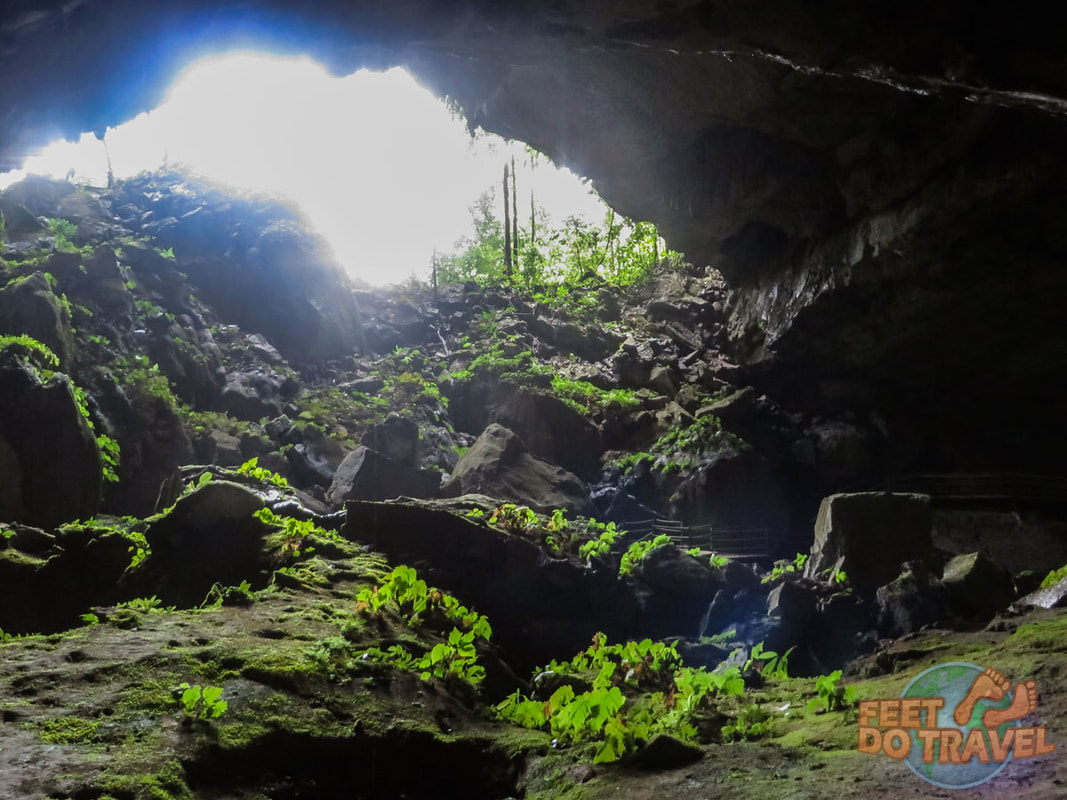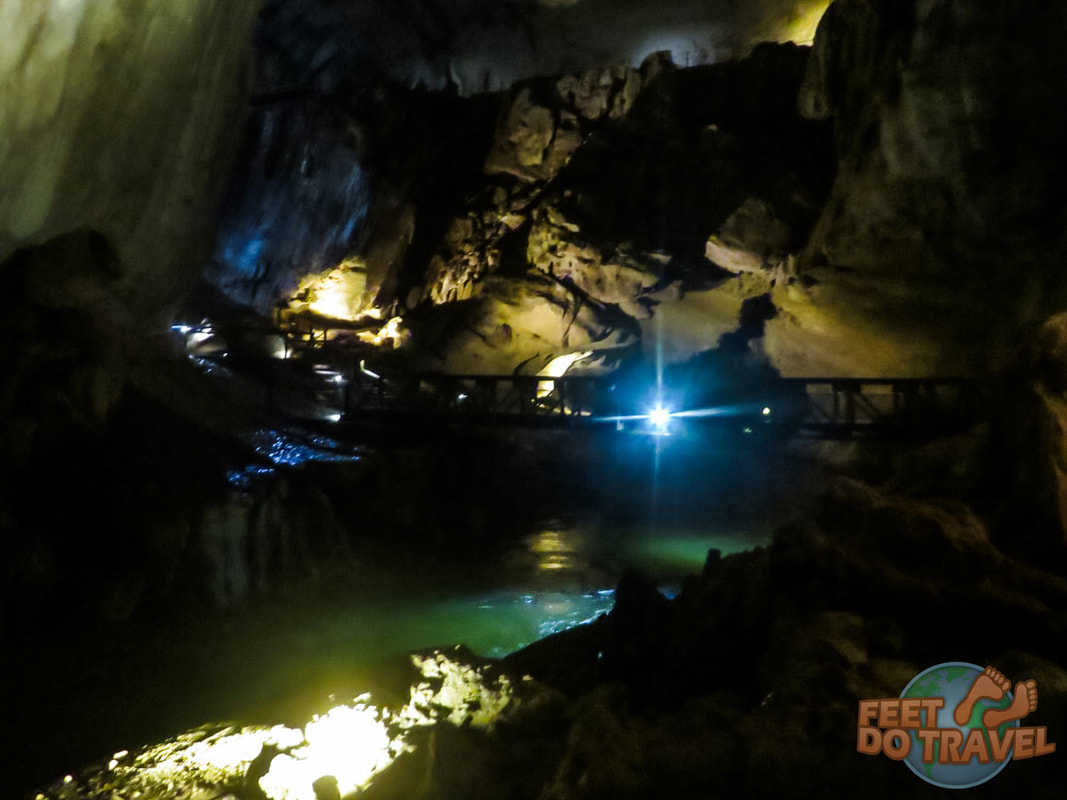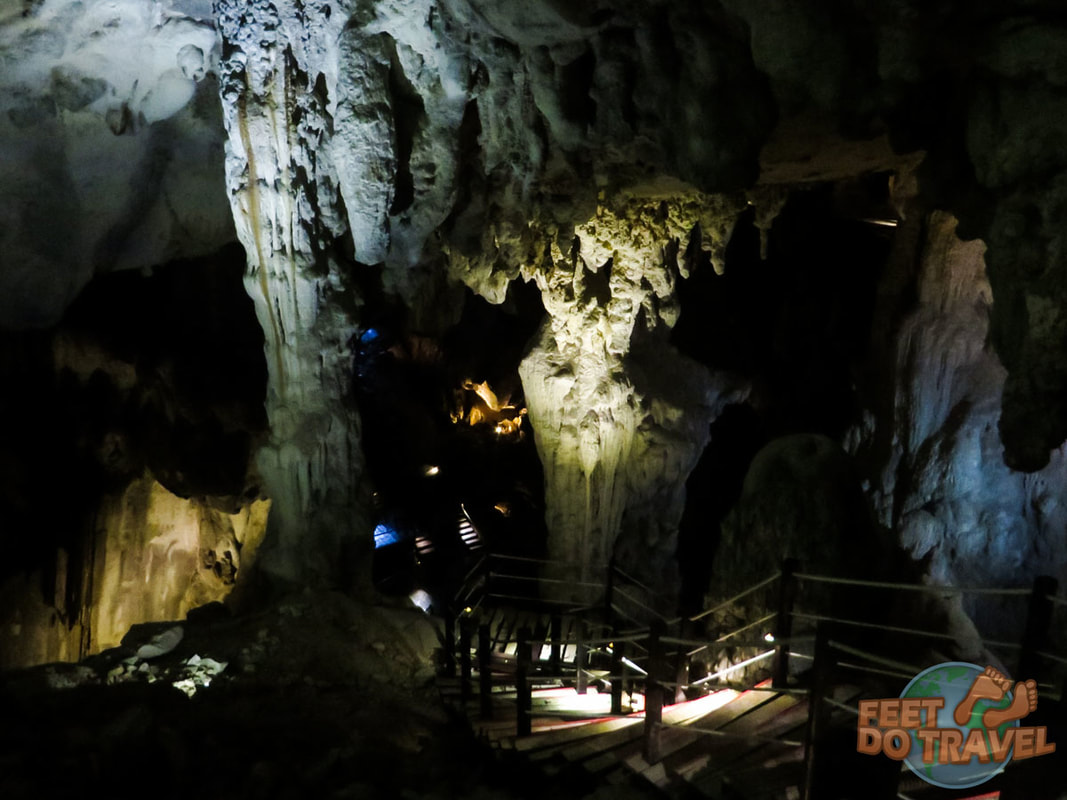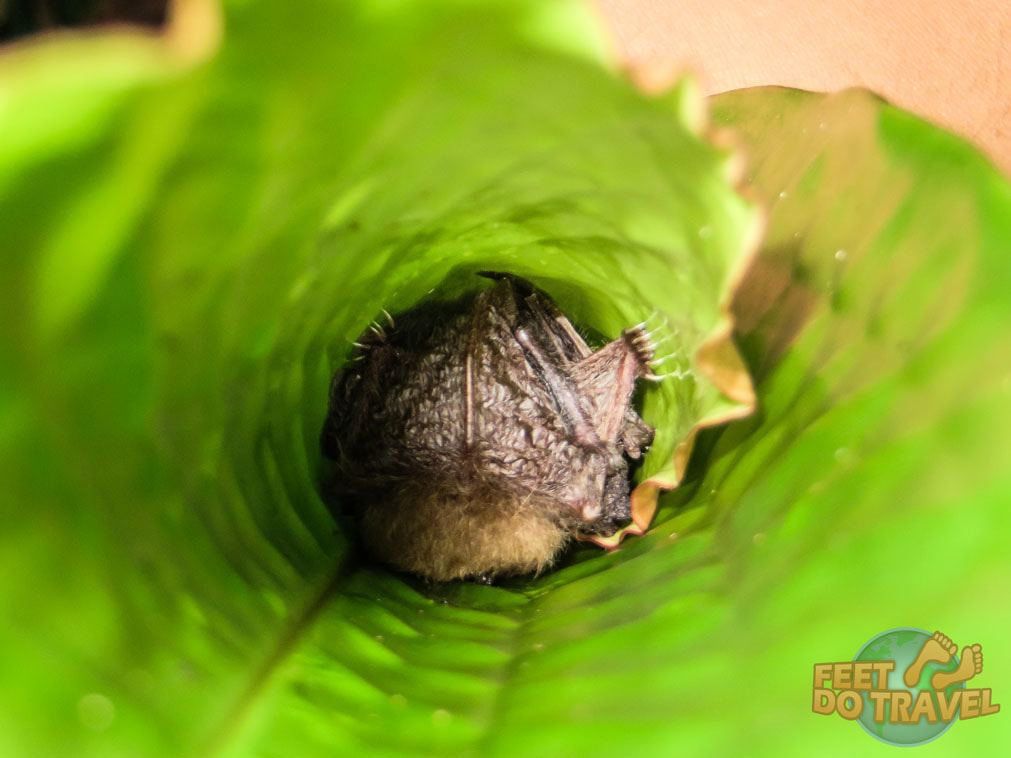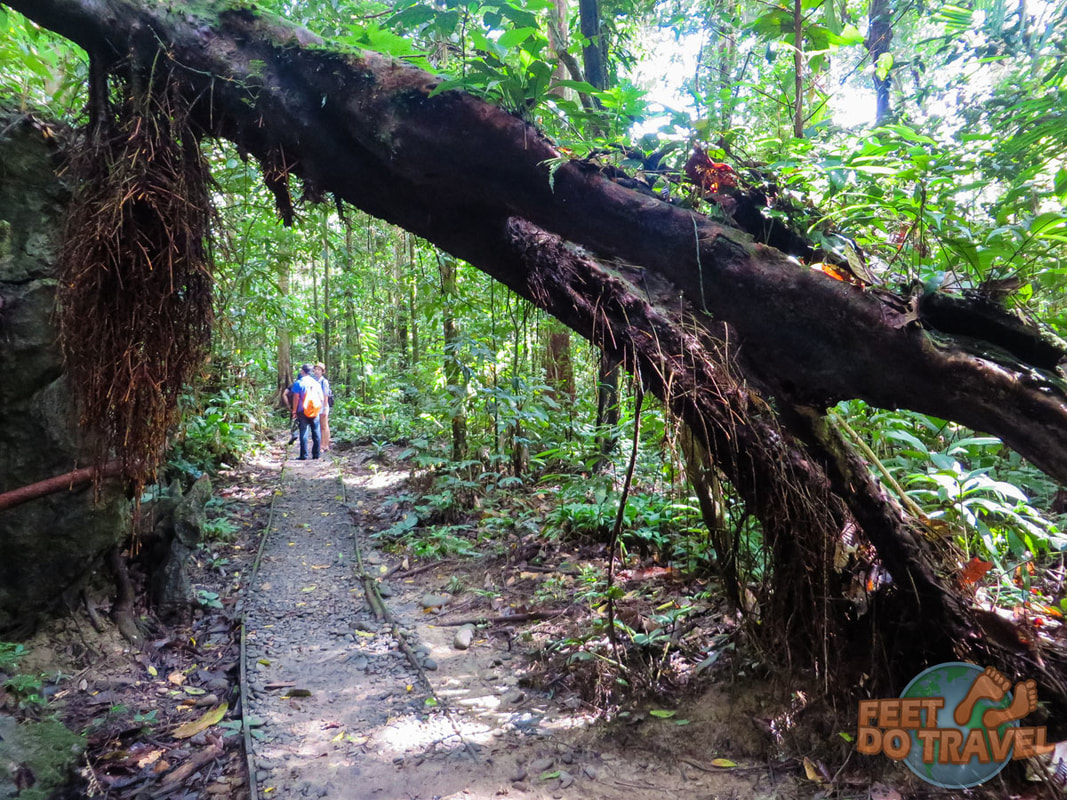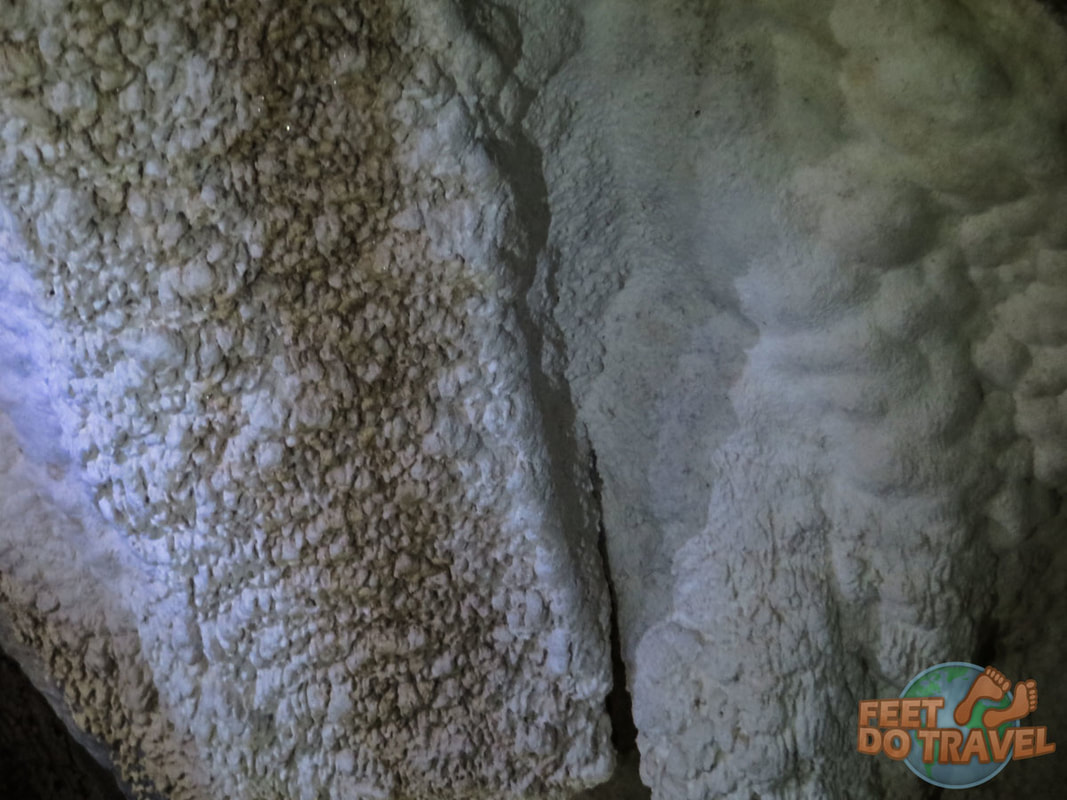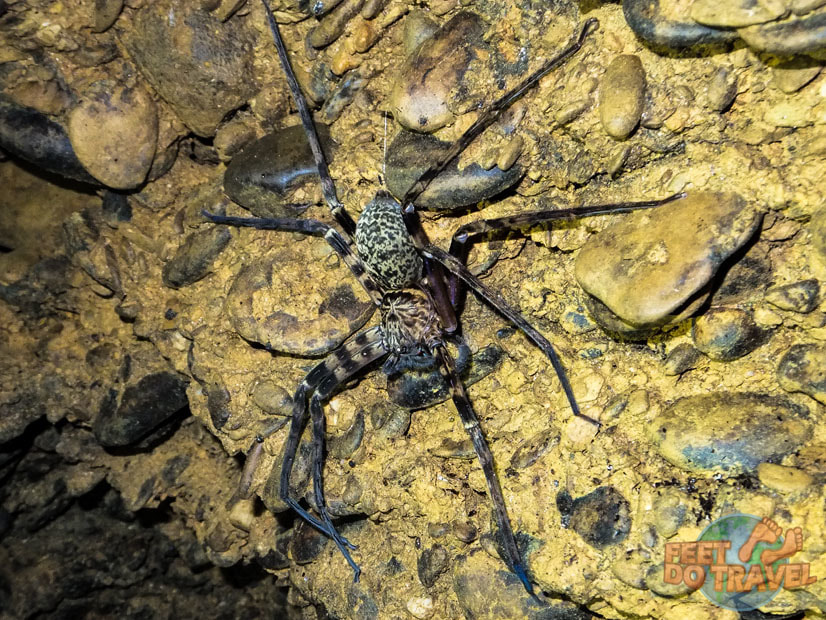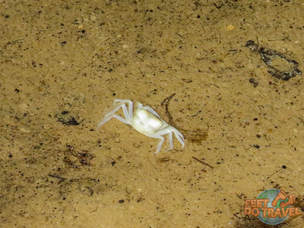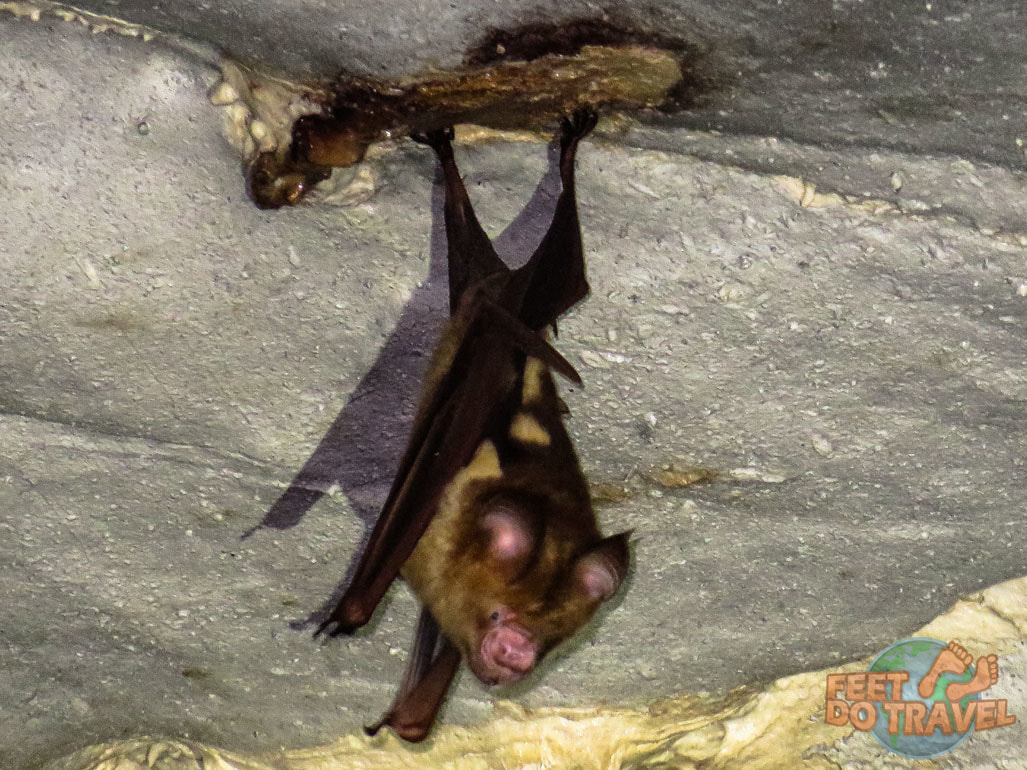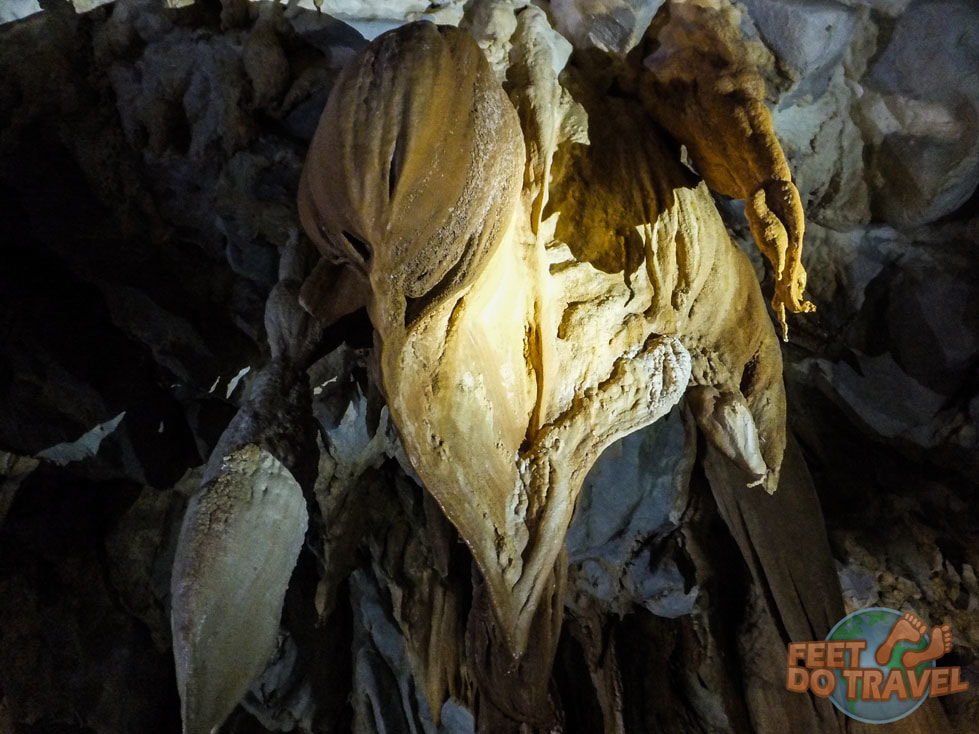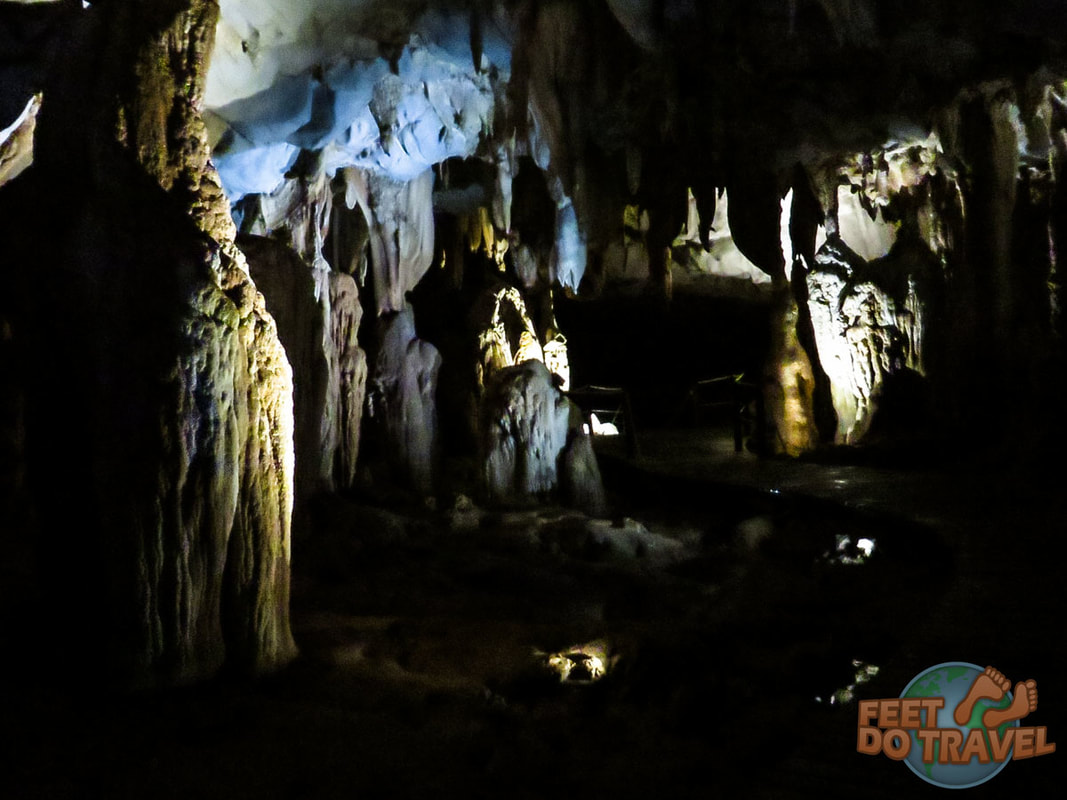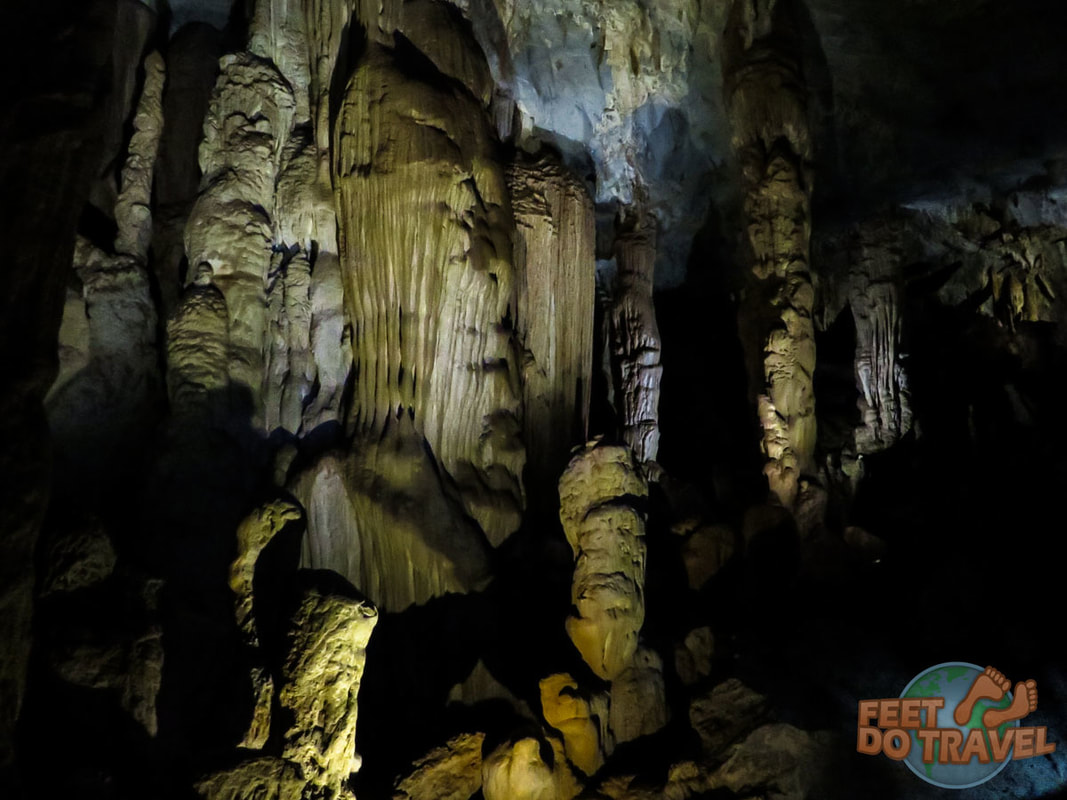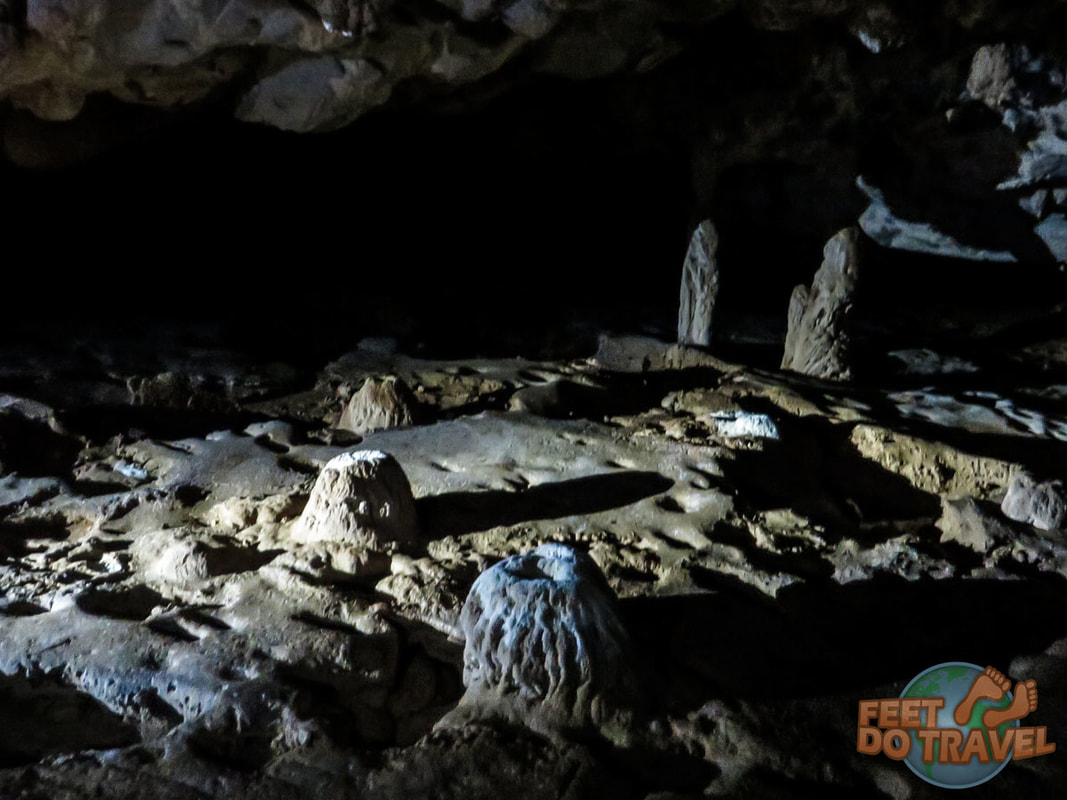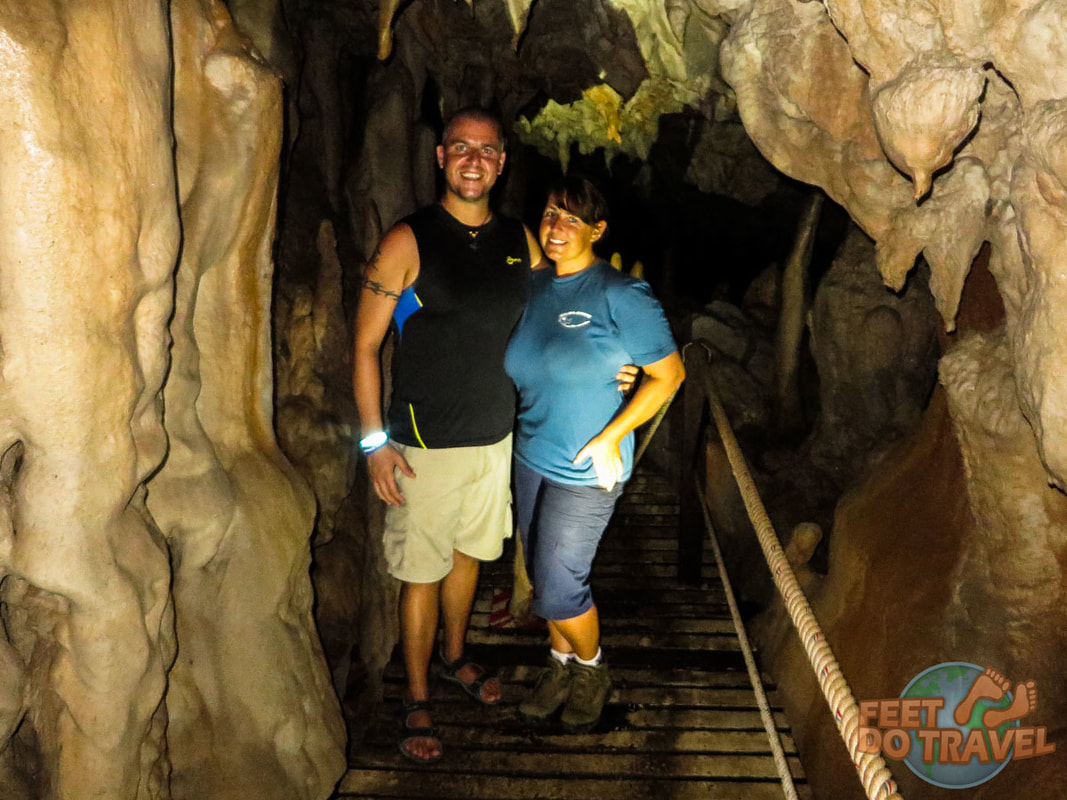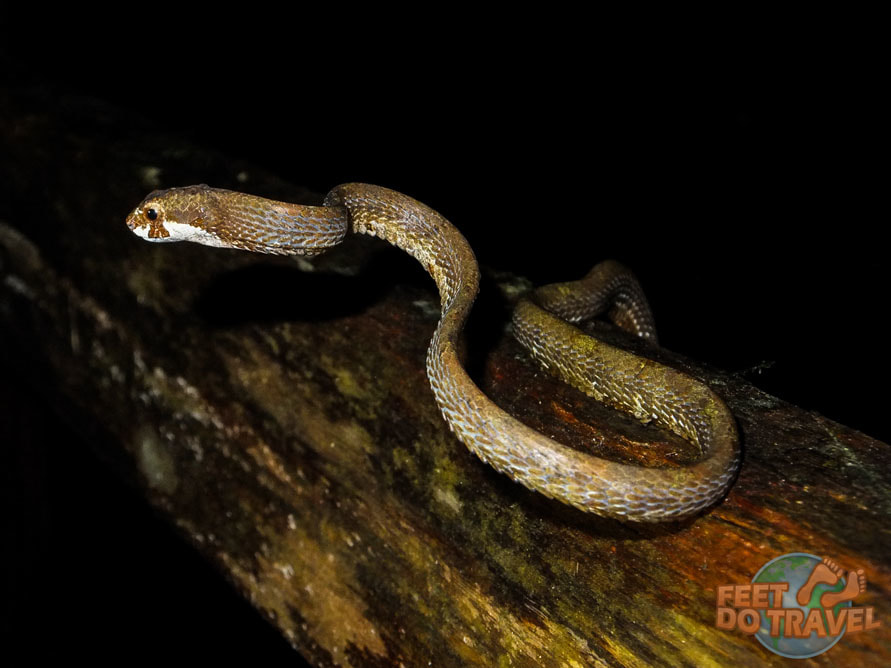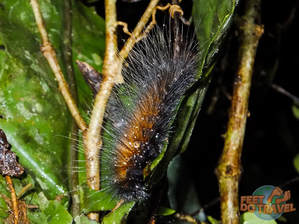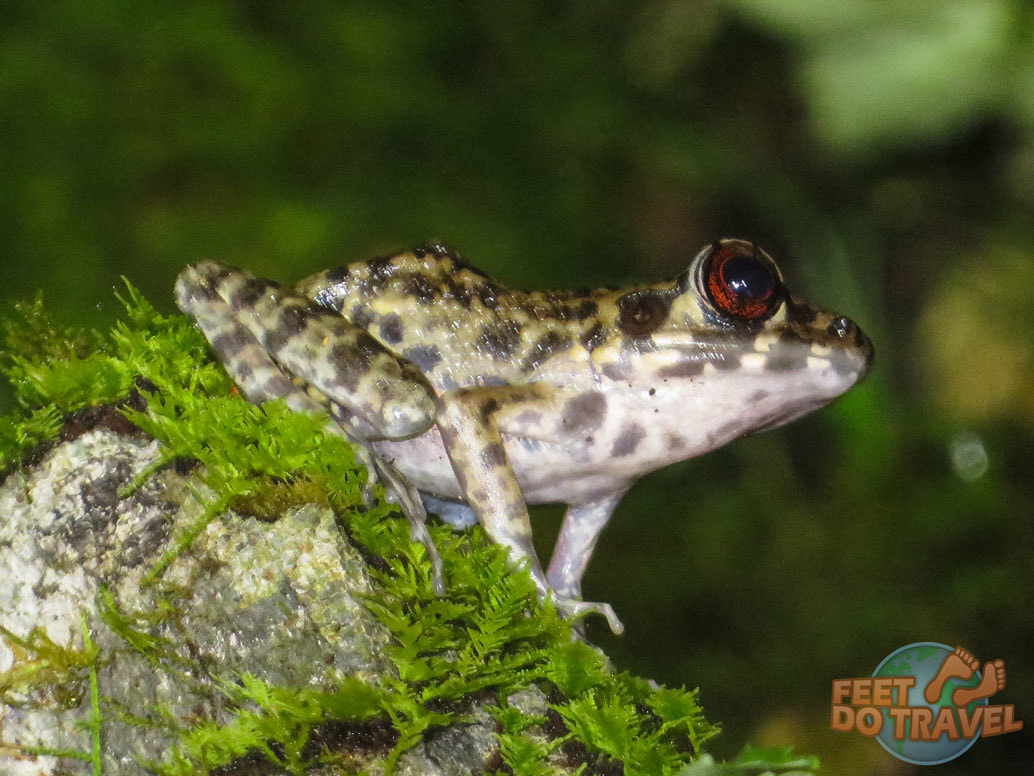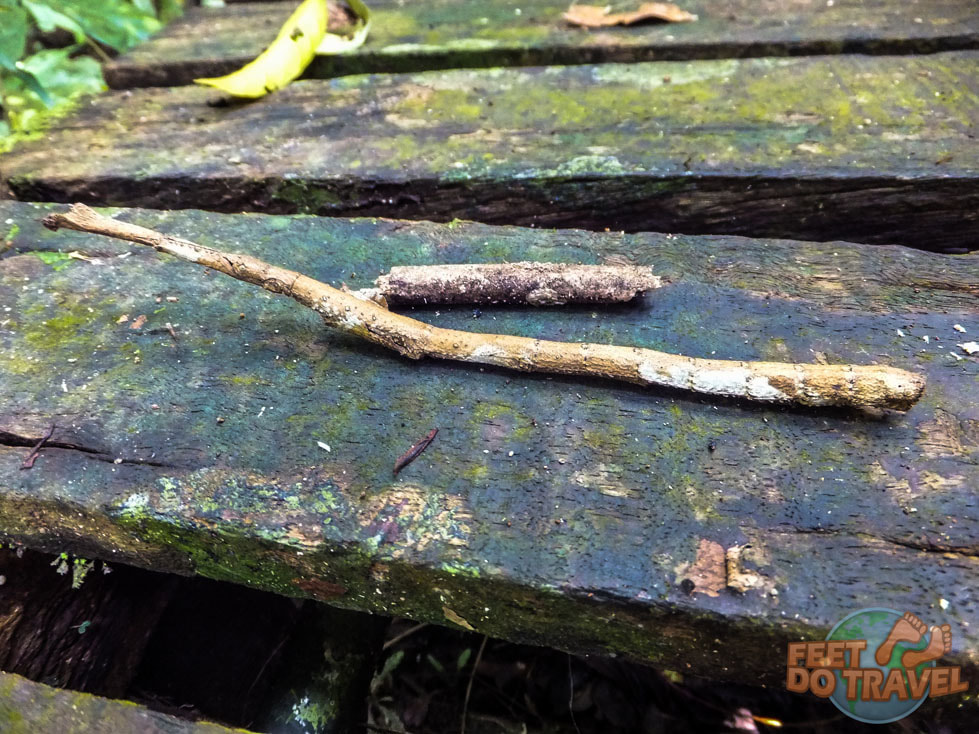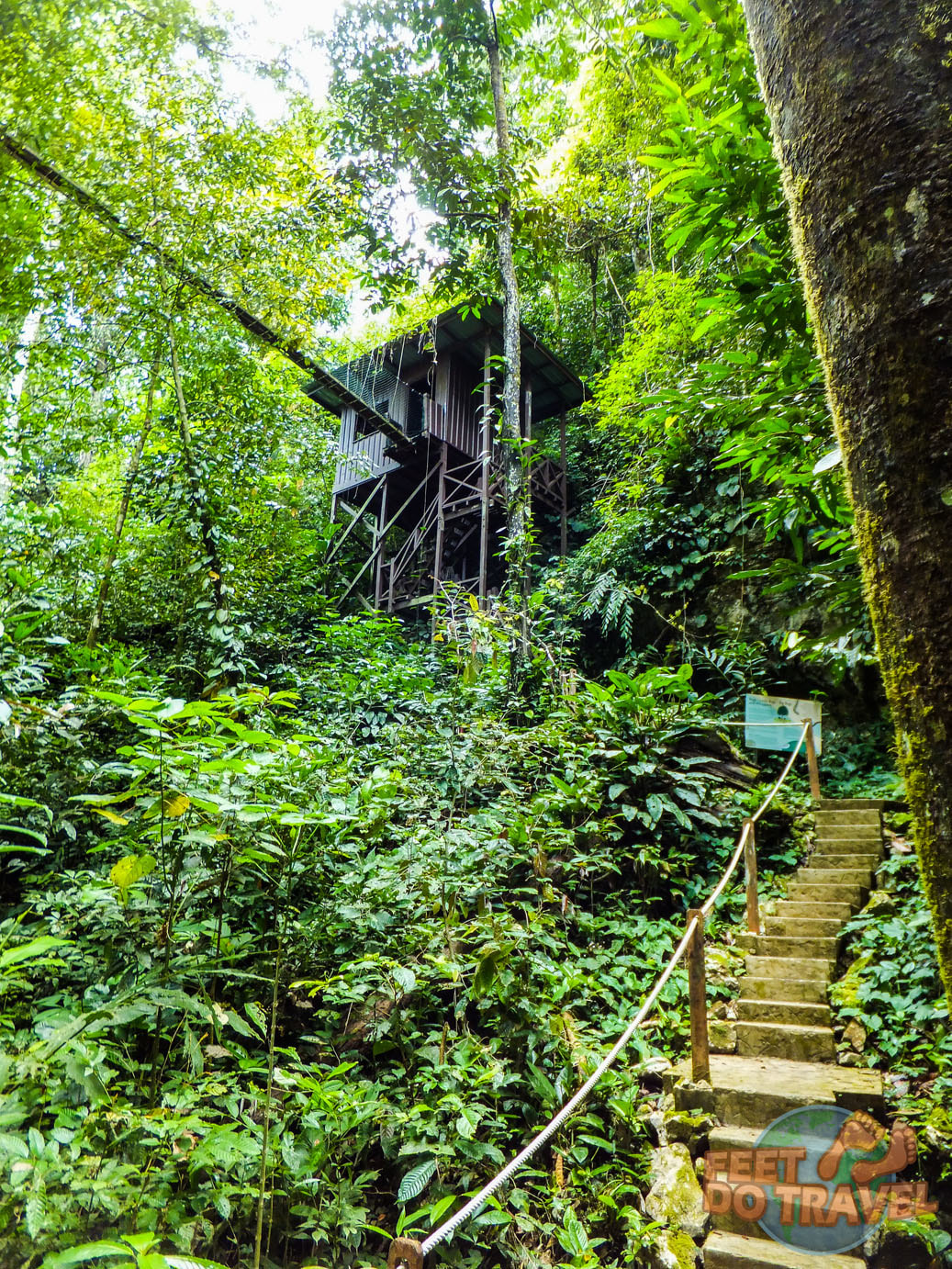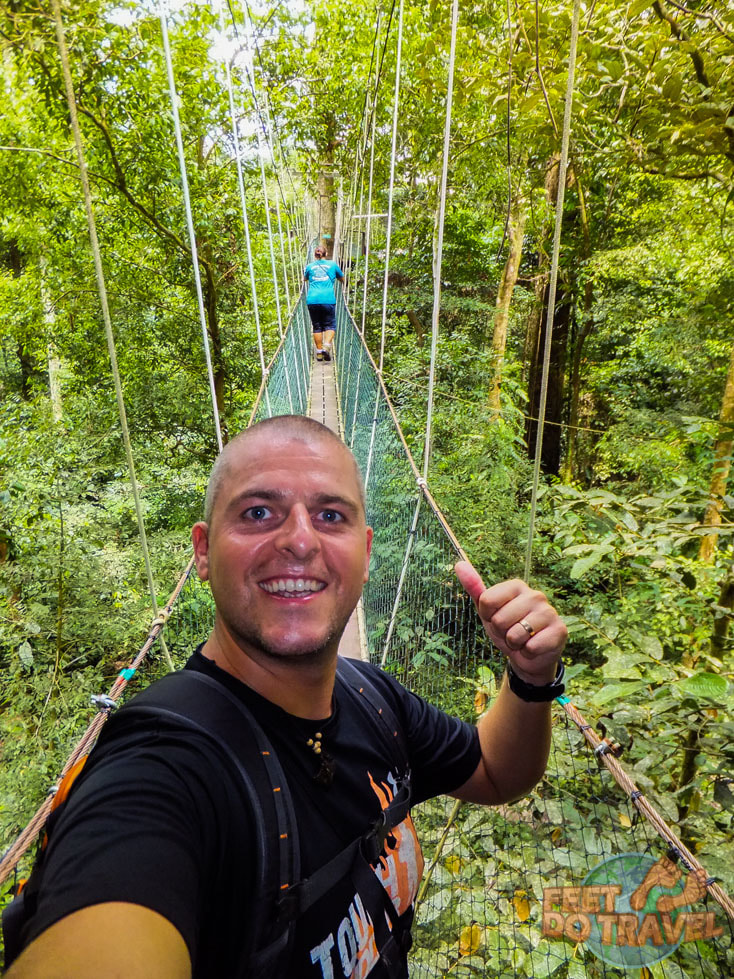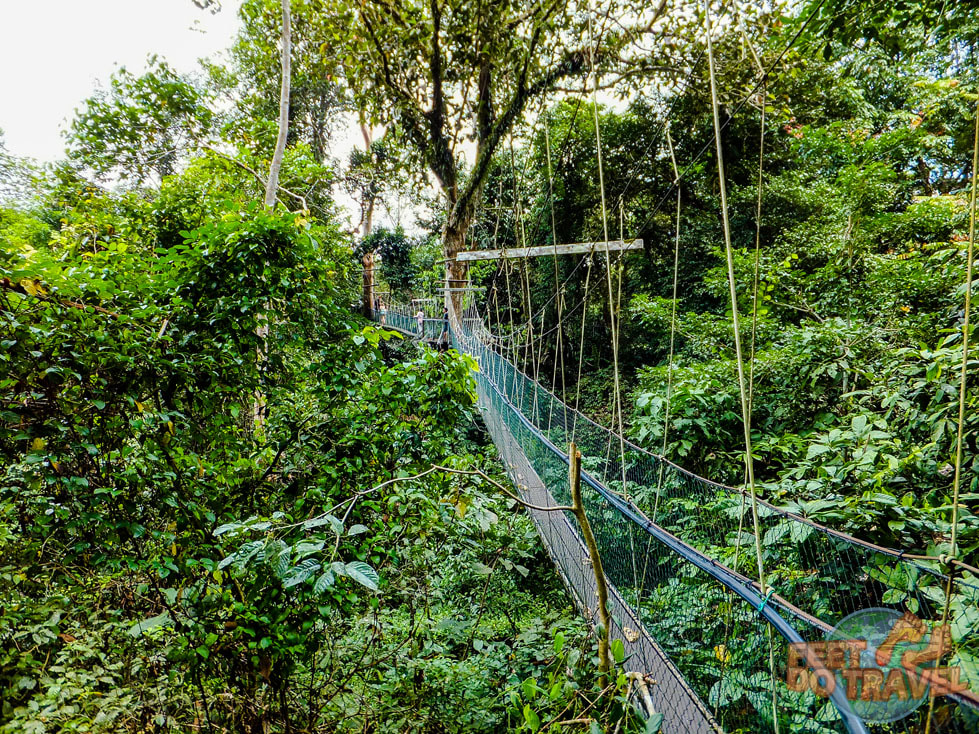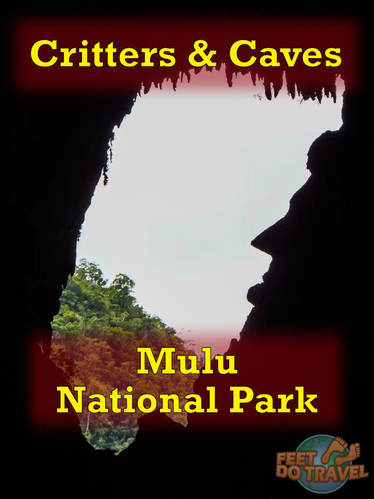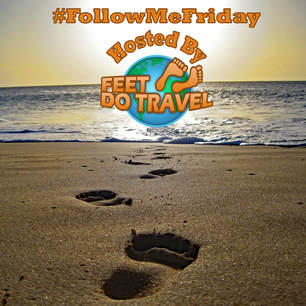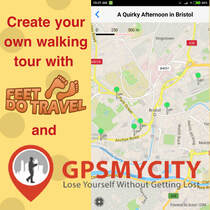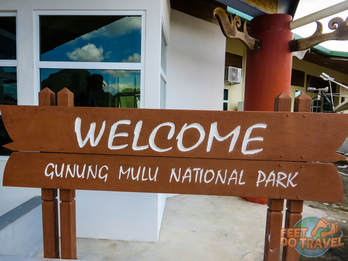
On our previous travels we had visited jungles in Sepilok, Beko National Park and Tanjang Putting, but had read that the UNESCO World Heritage Site, Gunung Mulu National Park in the heart of Malaysian Borneo, was the most spectacular.
We had to take a trip here to discover this for ourselves.
An introduction to Mulu National Park
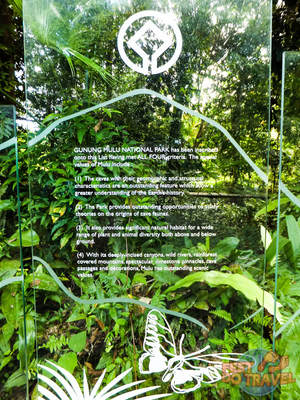
The main reason visitors come to Mulu are for its range of fascinating caves. The definition of a cave is “any naturally occurring hole in the surface of the earth which has a zone of complete darkness, and is large enough for a human being to completely enter”
There are many different types of caves and the form and shape of caves can be affected by flowing rivers, strong winds, lava flows, waves pounding, land-mases moving and tectonic forces.
Mulu is a geologists dream!
Mulu is also a hikers dream and there are many self-guided trails to follow such as Paku Waterfall (2 hours), Paku Valley Loop (8km round trip) Botanic Trail (1.5km) and Kenyalang Loop (2.5km)
Mulu is a place to visit if you love ancient, pristine rainforest, it’s nature at its best! This ticked our box … Mulu was what we had been looking for!
Fun fact: Tropical and equatorial rainforests cover less than 2% of the earth’s surface but house 50% of all life on the planet
As mentioned, there are a number of “show caves” which are caves that can be visited by anyone, so we visited them all! Mulu is also a place for anyone interested in adventure caving, this National Park caters for everyone of all ages and levels of adventurous-ness. One of the most popular advanced trips is a hike to the Pinnacles, a 3D/2N adventure which Sy would have loved to have done but alas, this just isn’t for me.
I have to add that I spent most of my time in the jungle wet! Sometimes through sweating in the hot and humid heat and other times due to torrential rain downpours so take a good rain jacket! It’s all part of the jungle experience so plan for it and go with it – it’s fun (remember when you were a child and you would be playing out in the rain without any cares? Transport yourself back in time to those days and enjoy the experience!).
For more information on Mulu National Park, park entry fees, their paid tours, unguided walks, prices and to book your trips, visit their excellent website.
Most people who have heard of Mulu know about Deer Cave. It has the world’s largest cave passage open to the public (it used to be the world’s largest cave entrance full stop until 2009 when Sơn Đoòng cave was discovered in Vietnam, however special permits are required to visit). The main entrance of Deer Cave measures a whopping 14 m (479 ft) tall and the cave is 4.1 km (2.5 miles) long.
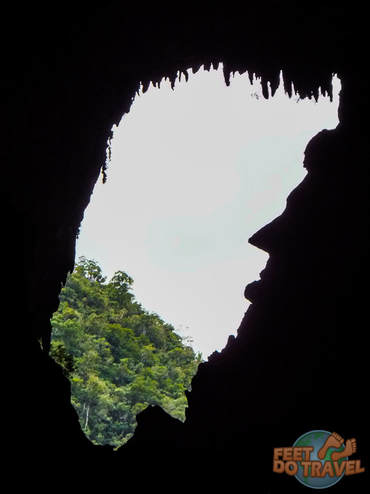
It is reputed that 3 million bats call this cave home and with 12 different species found here, it’s the highest number of bat species occupying a single cave ever recorded. The bats “home” means they sleep and poop here, so with 3 million bats’ worth of bat poop (known as guano) all along the cave floor, steps and handrails, not only can this be a bit pungent in places, but you really want to avoid touching the handrails when walking around!
Towards the back of the cave, we turned and saw the famous “Abraham Lincoln” view which is appropriately named as the jutting rock looks like the President’s profile.
Tip: Wear walking boots or good non-slip shoes; bat guano is slippery.
Lang Cave is next to Deer cave, is the smallest at Mulu and is included in the tour with its larger more famous neighbour. It was named after a guide who led an expedition in the late 70s to research the caves in Mulu and has some interesting stalactites (down) and stalagmite (up) formations such as “the jellyfish”. Every now and then, I would feel the dripping water on my head from one of them. Inside, there is a looped boardwalk but, because the cave isn’t very big, it only took us around 30 minutes to walk 280 metres.
Both of these caves are accessible by a short trip up the jungle river in a longboat which was so much fun; passing stunning views of dense trees and feeling the cool breeze on my face made me smile all the way.
| Wind Cave was given its name because of the cool breeze that flows through it and this was the first cave we visited on our morning trip. There is a sloped wooden boardwalk to the entrance of this 350 metre long cave and we spent about an hour in total walking along the looped boardwalk marvelling at the beautiful stalagmite and stalactite formations. It has several chambers however King’s Chamber is the one people are here to see which is filled with huge and impressive stalactites and stalagmites. Our mouths fell open when we stepped into this chamber! Alas photographs simply do not do this cave justice. |
Be warned; there are 200 steps to walk up to reach the cave entrance and, as we climbed, I was thinking to myself “I hope this cave is worth it”. Goodness me it definitely was!
What a feast for the eyes; if you like your caves, you will love Clearwater!
Clearwater Cave is split into two so we started off by looking at Lady Cave, a small section with impressive stalagmite and stalactites. There was a sign that told us that the roof of this cave had fallen through, but where had the rocks gone? No one knows so we can only guess that there is a deeper crevasse below so far down no one can see.
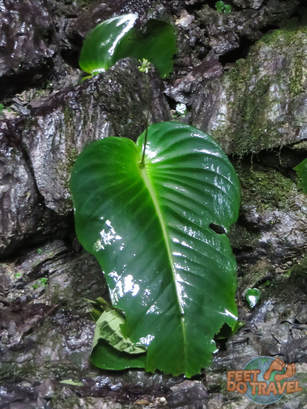
All the way through the cave, we marvelled at the formations which have been carved out by a river that used to run through this section. Parts of Clearwater Cave are still being formed by the world’s longest underground river that rushes through and when you are near it, the noise is so loud you can hardly hear the person talking next to you. As we listened to the roar of the river, I turned and looked up at the light streaming through an opening onto lush green trees high up. Wow, this cave was mighty impressive. Yet again, photos do not do this wonder of nature any justice.
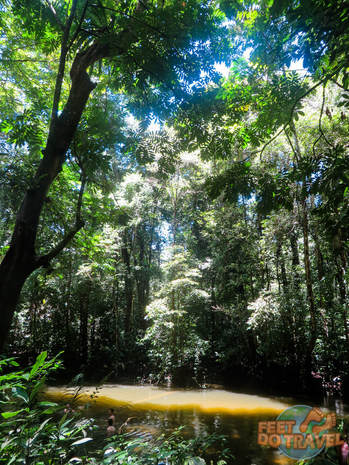
After my visit to Clearwater, on the longboat journey back to the National Park entrance, I felt so privileged to be there at that moment in time looking at all the pristine nature surrounding me. It is safe to say I was in a happy place!
Tip: Take your bathers with you if you want to swim in the river. If you forget and want to swim and don’t have a tour in the afternoon, then do as I did and jump in fully clothed! You can dry your clothes when you are back at your accommodation so just go for it!
The newest of the caves opened to the public in 2006 involved a short longboat ride down the river then a 1km walk through a stony jungle path. Jasper was our guide and he was phenomenal; a wealth of knowledge and information and although we were told to allow 3 hours for the tour, we ended up returning after 4 hours. He told stories of his Shaman grandfather of the Dayak tribe back in Kuching and how, when he was younger, his family sent him out into the jungle to learn how to survive. He would spend some time in the jungle sleeping, hunting, eating and said the jungle had been everything to him; his grocery store, his pharmacy; his bedroom. He relayed stories of plants and their medicinal purposes and he shared Shaman beliefs. We were fascinated listening to him and wanted to hear more.
Along the stony path, Jasper pointed out a natural pepper plant and ginger plant. If you thought bats only sleep in caves – think again! Jasper found a tiny bat curled up inside the leaf of a plant!
We came to a point in the cave where Jasper wanted us to experience its true darkness. We stood still, turned off our torches and for a couple of minutes were in total blindness. Usually in the dark, our eyes will become accustomed to the low light, but not here! I waved my hand in front of my face and couldn’t see a darn thing, we really were in total blackness and I couldn’t help but wonder what it would be like to become stuck in here for any reason if a torch broke! Seriously scary and disorientating, and I was grateful when we turned our torches back on again.
During our night walk, we saw a lot of critters, it was awesome! Unfortunately, I cannot tell you all of their names as (sadly) our guide rushed our group of 11 through with hardly enough time for us to photograph. He would hurry us along and because we were at the back with three other people who were just as interested in photography as us, we missed everything he said. As we have done a few jungle night walks in the past, we did notify the Park that we felt the group size was too large and the pace was too fast so they will hopefully address this in the future.
I can tell you that we saw stick insects, a few different frogs, a couple of really ugly crickets, a black spider, a huge furry caterpillar, a teeny tiny frog that was in a tube making a noise, a bright red sleeping bird (we couldn’t tell what it was because its head was buried in its breast), copulating critters, a Draco Draco lizard (gliding lizard), hammerhead leach and a slug-eating snake. Apologies that I am unable to actually name exactly the type of critters we saw.
If you have ever wondered what it is like to be high off the jungle floor in the tree top canopy, then this two hour tour is for you! Unfortunately, I have a huge fear of heights so attempting this walk was a big-deal for me. If you want to find out how I survived, read our post Mulu Canopy Walk – In the Face of Fear.
The Skywalk as it is known. It’s “the world’s longest tree based canopy walk” and is basically a suspended walkway made from wooden planks and ropes in the National Park. To reach the canopy tower, it’s a 30 minute walk along jungle boardwalks spotting critters along the way and we saw stick insects that really were true to their name-sake, this led to our second jungle game “stick … or insect!”. The simple games you play when nature is your only television!
Despite not liking heights (or bridges), I would definitely recommend the Canopy Walk! Why? Simply because this is nature at its finest and it was wonderful to be in the middle of it instead of on the outside looking up.
Walking boots or walking sandals?
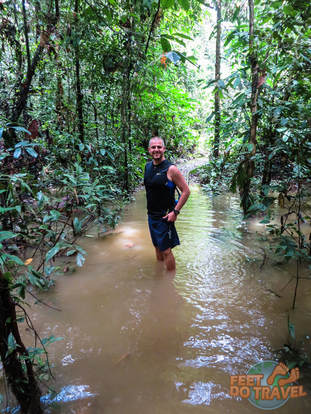
- Drink plenty of water as you will sweat! (Well, men will sweat and women will sparkle!).
- Always wear sensible walking non-slip shoes – not flip flops! It can (and often does) rain torrentially without warning and walking 4.8km back from Deer Cave in wet flip flops won’t be a lot of fun!
- Wear quick-drying clothes; it doesn’t have to be walking shorts/trousers, you can wear sports or running gear or board shorts – they are all made from quick-drying material and are perfect for the jungle.
- Take a raincoat or poncho – for the same reason! If you don’t mind getting wet then no worries (we didn’t take a jacket for Deer Cave and the heaven’s opened; we didn’t mind as we knew we could hang up our clothes to dry when we were back at our homestay but that was our choice).
- Consider a Waterproof Bag – then you can keep your valuables dry and not have to worry about the downpours.
- Always carry a torch with you; the caves are dark and can be slippery.
How to get to Mulu National Park
Mulu is in the Sarawak region of Malaysian Borneo and is only accessible by a short 30 minute flight with MASwings from Miri. You can also fly from Kota Kinabalu, Kuching and other places in Borneo but you may have a brief stop in Miri). There are daily flights but at limited times.
Where to eat and refilling your water bottles
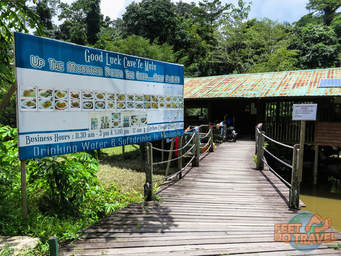
Where to stay – no wi-fi, for that “get away from it all” experience
If you are looking for budget accommodation, there are a number of homestays you can choose from. We stayed with Mulu Backpackers Homestay which is a 15 minute walk from the National Park entrance. We found the owners to be very friendly, efficient and helpful and, if you are on a budget, we would definitely recommend you stay here and check out reviews on Trip Advisor.
Where to stay – with wi-fi
There are deluxe, garden bungalows, longhouses or hostel options on-site at Mulu Park and you can buy wi-fi.
The Mulu Marriot Resort is a few km’s away from the Park entrance but they arrange on-demand pick-ups and drops offs, wi-fi is free at this hotel. These are the only two options for wi-fi in Mulu.
Don't forget that you can book hotels through our website as we have an affiliate partnership with Booking.com. Click here to visit our Hotel Booking Page then search as normal. There is no extra cost to you but you will be helping us!
If you are travelling around Asia, we recommend you check bus, boat and train schedules ahead of time with 12Go Asia website. You can also book your tickets in advance online (as we did) to save time and hassle.
We are proud to host the #FollowMeFriday blog Linkup. If you have a blog post you would like to share, feel free to click on the picture below which will take you through to our Facebook Community and drop your link there. The link-up is open from 3am Friday morning (UK time) and will close 8pm UK time Sunday. We are a fun and loyal group who are more than happy to comment, share and reciprocate! Happy Travelling Feet Fans!

